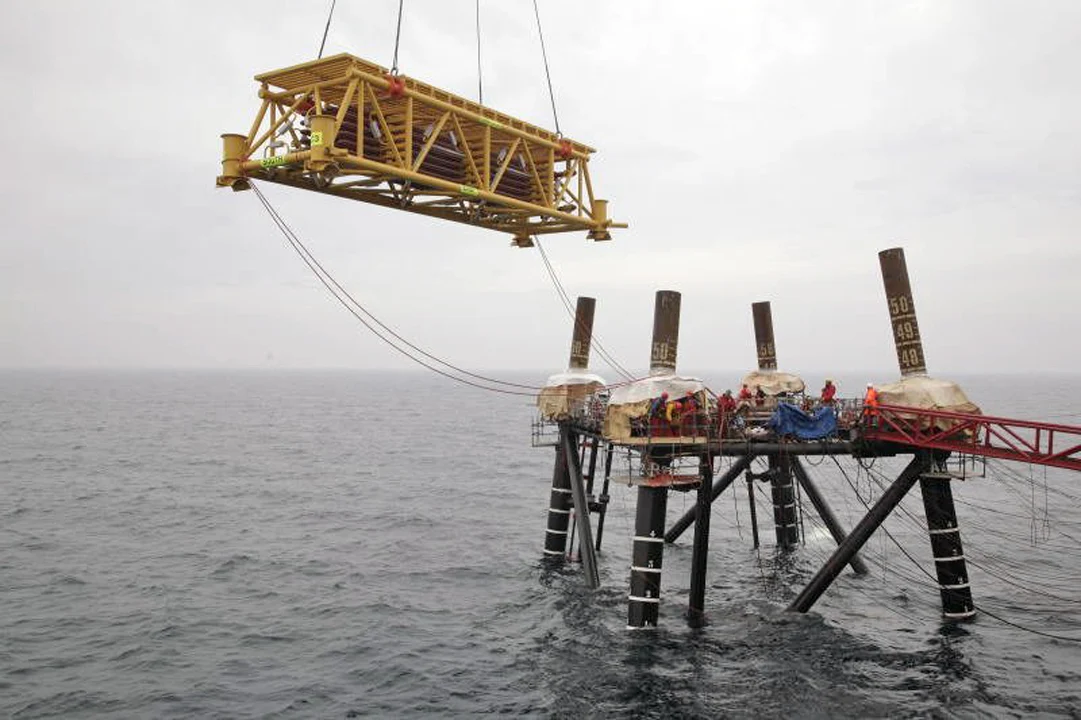Introduction
Subsea heat exchanger is a high-performance thermal device installed on the seabed, designed to transfer heat between fluids in offshore oil and gas operations. These exchangers are deployed at great ocean depths—sometimes beyond 3,000 meters—where they function under extreme pressure and temperature conditions. Unlike conventional heat exchangers, which are used in land-based or topside environments, subsea variants are engineered for remote, unmanned operation on the ocean floor.
They play a critical role in subsea processing systems, allowing for cooling or heating of fluids directly beneath the surface. This removes the need to send fluids back to topside facilities, increasing efficiency and reducing both infrastructure and operational costs.
Why Subsea Heat Exchangers are Important
- Improved Flow Assurance: Subsea heat exchangers are vital for maintaining ideal fluid conditions to prevent hydrate formation, paraffin wax build-up, or slugging in pipelines.
- Compact Subsea Processing: As the oil and gas industry moves toward subsea factories, which are fully automated deep-sea installations, these exchangers enable local thermal management without surface intervention.
- Reduced Surface Footprint: By localizing heat exchange subsea, operators reduce reliance on topside platforms or FPSOs (Floating Production, Storage, and Offloading units), leading to lower capital expenditure.
Design Considerations for Subsea Heat Exchangers
Designing heat exchangers for subsea deployment involves addressing several environmental and engineering challenges:
- High Pressure Resistance: The units must withstand ambient seawater pressure—up to 30 MPa (~4,350 psi) at great depths.
- Material Selection: Materials must resist saltwater corrosion, high pressure, and temperature fluctuations. Common materials include:
- Super Duplex Stainless Steel
- Titanium Alloys
- Inconel and other nickel-based alloys
- Compactness: Space is limited on subsea modules. Hence, designs like:
- Printed Circuit Heat Exchangers (PCHE)
- Spiral Plate Heat Exchangers
- Double Pipe or Coil-in-Shell Systems
are preferred for their compact yet high-efficiency performance.
- Biofouling Protection: Marine growth and biofouling can reduce performance. Anti-fouling coatings and smooth, corrosion-resistant surfaces are used.
- Thermal and Mechanical Stability: The exchanger must manage the thermal stresses from cycling hot and cold fluids while maintaining structural integrity over long periods.
Types of Subsea Heat Exchangers
- Printed Circuit Heat Exchangers (PCHE):
- Highly compact and robust
- Microchannel design for high surface area
- Excellent for high-pressure, high-temperature fluids
- Shell-and-Tube Subsea Systems:
- Adapted from traditional models with pressure-compensating enclosures
- Easier to scale for large thermal duties
- Spiral Plate Heat Exchangers:
- High efficiency in a compact form
- Suitable for viscous or particulate-laden fluids
- Subsea Cooling Skids:
- Integrated modules with pumps, sensors, and heat exchangers
- Used for local fluid cooling before reinjection or transport
Key Applications
- Hydrate Prevention:
- Used to heat fluids to stay above the hydrate formation temperature, especially in long tie-back systems.
- Subsea Compression and Separation:
- Regulate gas temperatures during subsea compression or separate gas-liquid phases efficiently.
- Enhanced Oil Recovery (EOR):
- Preheat water or chemicals before they are injected into reservoirs.
- Cooling of Subsea Electrical and Hydraulic Systems:
- Maintain operating temperatures of motors, transformers, or electronic modules installed subsea.
- Energy Recovery:
- Recover waste heat from outgoing streams to preheat incoming ones, increasing overall thermal efficiency.
Benefits of Using Subsea Heat Exchangers
- Operational Efficiency: Reduces the need to transport fluids to topside units, saving time and energy.
- Lower CAPEX and OPEX: Eliminates or minimizes large surface platforms and related infrastructure.
- Automation Friendly: Integrates easily into autonomous control systems for real-time operation and self-diagnostics.
- Improved Reliability: Designed for long lifespans (15–25 years) with minimal maintenance.
- Compact and Modular: Ideal for tight subsea layouts and scalable based on field requirements.
- Environmentally Safer: Fewer risers and umbilicals reduce the risk of leaks and ecological disturbance.
Future Trends and Innovations
- Smart Subsea Systems:
- AI-integrated sensors for predictive maintenance and performance monitoring in real-time.
- Advanced Materials:
- Use of graphene coatings, composite materials, and nanotechnology for higher durability and thermal performance.
- Standardization and Modularization:
- Industry moving toward plug-and-play subsea modules to reduce customization and installation costs.
- Green Energy Integration:
- Coupling with subsea geothermal or renewable-powered systems for eco-friendly offshore operations.
- Digital Twin Monitoring:
- Real-time digital replicas of subsea exchangers allow for remote simulation and monitoring of performance over time.
Conclusion
Subsea heat exchangers are not just a component and they are a strategic enabler of deepwater oil and gas production. As the industry shifts toward fully autonomous subsea operations and subsea processing plants, the role of these exchangers will only grow. They offer localized heat transfer, flow assurance, and energy efficiency in one of the world’s most extreme and challenging environments.
By combining smart design, durable materials, and digital integration, subsea heat exchangers are helping operators push the boundaries of what’s possible beneath the ocean surface—enhancing safety, sustainability, and profitability in offshore operations.

